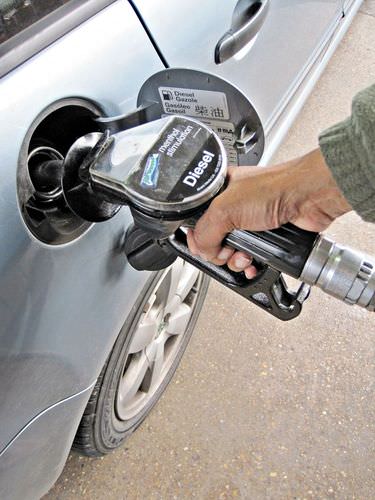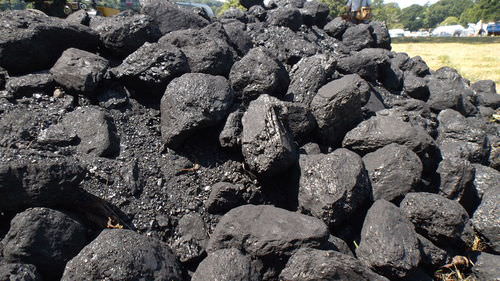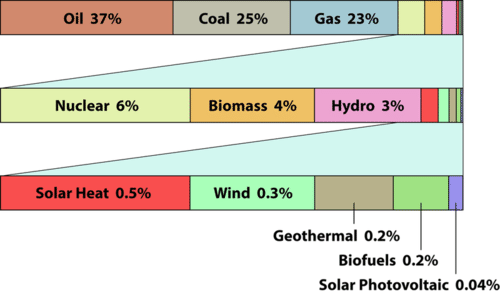可再生和不可再生资源 -- -- 先进
章节大纲
-
Renewable or nonrenewable, what's the difference?
::可再生的或不可再生的,有什么区别?That's like asking the difference between having an endless supply and having a limited supply. Will this planet eventually run out of oil? Probably. So oil is a .
::这就像问 石油的无尽供应和有限的供应之间的差别。 这个星球最终会用光石油吗?也许。所以石油是一个。Renewable and Nonrenewable Resources
::可再生和不可再生资源Energy and Sustainable Use
::能源和可持续利用Applied to natural resources , renewable or nonrenewable are relative rather than precise terms. Not surprisingly, we use human parameters to classify resources into these two categories.
::对自然资源应用,可再生或不可再生是相对的,而不是精确的术语。 毫不奇怪,我们使用人类参数将资源分为这两类。Solar radiation and wind energy are considered renewable resources because their availability far exceeds our rates of consumption. Here, availability is shown as volume equal to the annual flux in terawatts (1 TW = 10 12 watts). Eighty-nine thousand TW represents the amount of sunlight that falls on the Earth's surface, 370 TW depicts all the energy in the wind, and 15 TW was the global rate of energy consumption in 2004.
::太阳能辐射和风能被视为可再生资源,因为它们的可用量远远超过我们的消耗率,这里显示,可用量相当于兆瓦(1兆瓦=1012瓦特)的年通量。 89 000兆瓦是落在地球表面的阳光量,370兆瓦是风中的所有能量,15兆瓦是2004年全球能源消耗率。Renewable Resource
::可再生能源A resource replenished by natural processes at a rate roughly equal to the rate at which humans consume it is a . Sunlight and wind, for example, are in no danger of being used in excess of their longterm availability ( Figures , ). Hydropower is renewed by the Earth’s hydrologic cycle. has also been considered renewable, but overpumping of groundwater is depleting aquifers , and pollution threatens the use of many water resources, showing that the consequences of resource use are not always simple depletion. Soils are often considered renewable, but erosion and depletion of minerals proves otherwise. Living things (forests and , for example) are considered renewable because they can reproduce to replace individuals lost to human consumption. This is true only up to a point, however; overexploitation can lead to extinction , and overharvesting can remove nutrients so that soil fertility does not allow forest renewal. Energy resources derived from living things, such as ethanol, plant oils, and methane, are considered renewable, although their costs to the environment are not always adequately considered. Renewable materials would include sustainably harvested wood, cork, and bamboo as well as sustainably harvested crops. Metals and other minerals are sometimes considered renewable because they are not destroyed when they are used, and can be recycled.
::由自然过程补充的自然资源得到补充,其比例大致相当于人类消费速度的自然过程所补充的资源,其补充资源的比例大致相当于人类消费速度,这是人类消费的一种。例如,阳光和风,没有被使用超过其长期供应量的危险,例如,阳光和风,没有被利用的危险,例如,阳光和风,没有被利用超过其长期供应量(图表,......)。水力因地球的水文循环而更新。 水力也被认为是可再生的,但地下水的过度抽水正在消耗含水层,污染威胁着许多水资源的使用,表明资源使用的后果并不总是简单消耗,表明资源使用的后果并不总是简单耗尽。土壤常常被视为可再生,但土壤侵蚀和矿物的侵蚀和消耗却证明是相反的。 生命物质(森林和风风能,例如森林和风风风风能,例如森林和风风风气)被视为可再生的事物,因为它们可以繁殖取代因人类消费而丧失的人(例如森林和风水、森林,例如森林和风水,例如森林,例如森林和矿物等),但从生物中产生的能源资源被视为可再生的能源资源,尽管其成本并不总是得到充分考虑。可再生能源材料将考虑,它们包括可持续的伐木、木木木、木木木木和竹木和竹木和竹,因为它们不能被回收,因为可以持续回收、再回收的作物,因为金属和矿物和矿物和再利用,因为可以被使用,因为金属和矿物和矿物和矿物和矿物和矿物是有时再利用,因此有时可以被销毁,因为金属和矿物和矿物和矿物和矿物和再利用,因此有时可以被销毁。Wind power is considered a renewable resource because the rate of supply far exceeds the rate of use. Although current use supplies less than 1% of the world’s energy needs, growth in harvesting wind energy is rapid, with recent annual increases of more than 30 percent.
::风能被视为可再生资源,因为供应率远远超过了使用率。 尽管当前使用量供应不到世界能源需求的1%,但风能收成增长迅速,最近年增长超过30%。Non-Renewable Resource
::不可再更新的资源A nonrenewable resource is not regenerated or restored on a time scale comparative to its consumption. Non-renewable resources exist in fixed amounts (at least relative to our time frame), and can be used up. The classic examples are fossil fuels such as petroleum, coal, and natural gas. Fossil fuels have formed from remains of plants (for coal) and phyto- and zoo-plankton (for oil) over periods from 50 to 350 million years. Ecologist Jeff Dukes estimates that 20 metric tons of phytoplankton produce 1 liter of gasoline! We have been consuming fossil fuels for less than 200 years, yet even the most optimistic estimates suggest that remaining reserves can supply our needs for
::与消费相比,不可再生资源不会以与其消费相比的时间尺度再生或恢复,不可再生资源存在固定数量(至少相对于我们的时间框架而言),可以加以利用。典型的例子有石油、煤炭和天然气等化石燃料。化石燃料从植物(煤)和植物和浮游动物(石油)的残渣中形成,从5 000万到3.5亿年。生态学家Jeff Dukes估计,20公吨浮游植物产生1升汽油!我们消费化石燃料的时间不到200年,但甚至最乐观的估计表明,剩余储量能够满足我们的需求。- Oil: 45 years
- Gas: 72 years
- Coal: 252 years.
Nuclear power is considered a non-renewable resource because uranium fuel supplies are finite. Some estimates suggest that known economically feasible supplies could last 70 years at current rates of use - although known, and probably unknown reserves are much larger, and new technologies could make some reserves more useful.
::核电被视为不可再生资源,因为铀燃料供应是有限的。 一些估计表明,已知经济上可行的供应量可以以目前的使用速度维持70年 — — 尽管已知,而且可能未知的储备量也大得多,而且新技术可以使一些储备更加有用。Global energy use includes mostly non-renewable (oil, coal, gas, and nuclear) but increasing amounts of renewable (biomass, hydro, solar, wind, geothermal, biofuels, and solar photovoltaic) resources.
::全球能源使用主要包括不可再生(石油、煤炭、天然气和核),但增加可再生资源(生物量、水力、太阳能、风能、地热、生物燃料和太阳能光伏发电)。Recall that the Second Law of Thermodynamics (which states that the entropy of an isolated system which is not in equilibrium will tend to increase over time) reinforces this view of “renewable” and “non-renewable” resources: Energy flows downhill – gets used up, is transformed into heat; only materials that can be recycled are “renewable.” It is only our time scale which makes any form of energy renewable. Eventually, the sun will burn out, as well.
::回顾《热力学第二定律》(其中规定,一个不处于平衡状态的孤立系统的卵子会随时间而增加)加强了这种“可再生”和“不可再生”资源的观点:能源向下流动 — — 被耗尽,转变为热量;只有可回收的材料才“可再生 ” 。 只有时间尺度才能使任何形式的能源再生。 最终,太阳也会燃烧。, industrialization of developing countries, and advances in technology are placing increasing pressures on our rates of consumption of natural resources. Pollution and overexploitation foreshadow resource depletion, habitat loss , and atmospheric change. Unequal distribution of wealth, technology, and energy use ( Figure ) suggest that developing nations will further increase demands on natural resources. With these increases in demand, current levels of resource use cannot be maintained into the future, and social and political instability may increase. Improvements in technology could mitigate these problems to some extent.
::污染和过度开发预示着资源枯竭、生境丧失和大气变化;财富、技术和能源使用分配不均(图)表明,发展中国家将进一步增加对自然资源的需求;随着需求的增加,目前的资源使用水平无法维持到将来,社会和政治不稳定可能加剧;技术的改进可以在一定程度上缓解这些问题。Per capita energy consumption illustrates the unequal distribution of wealth and natural resource use which threatens long-term resource supplies as developing nations demand higher standards of living. These inequalities threaten not only resource supplies but also global political stability.
::人均能源消费表明,财富和自然资源的使用分配不均,威胁到长期资源供应,因为发展中国家要求更高的生活水平,这些不平等不仅威胁资源供应,而且威胁全球政治稳定。The concept of renewable vs. non-renewable resources clearly depends on rates of human use ( Figure ); less clearly, its usefulness depends on the effects of use on other natural resources, such as pollution. Of course, we could change our rates of consumption. Indeed, if we increase our rate of consumption, renewable resources may need to be reclassified as non-renewable. This is the foundation of the concept of sustainable use – use of resources at a rate which meets the needs of the present without impairing the ability of future generations to meet their needs. Notice that this concept continues to focus on human needs; however, a solid understanding of ecology recognizes that human needs depend on entire , which in turn depend on all . Sustainable use could also apply to ecosystem services, which can be overwhelmed by overuse even though their “use” does not involve consumption. Perhaps we should shift our natural resource focus from rate of consumption (renewable vs. non-renewable) to sustainable use!
::可再生与不可再生资源的概念显然取决于人类使用率(图 ) ; 较不明显的是,其有用性取决于对污染等其他自然资源使用的影响。 当然,我们可以改变消费率。 事实上,如果我们提高消费率,可再生资源可能需要重新分类为不可再生。 这是可持续使用概念的基础 — — 以满足当前需求的速度使用资源,同时不影响后代满足其需求的能力。 注意这一概念继续侧重于人类需求;然而,对生态的坚实理解认识到人类需求取决于整个人类需求,而这反过来又取决于所有资源。 可持续使用也可以适用于生态系统服务,尽管其“使用”与消费无关,但过度使用可能会令生态系统服务不堪重负。 也许我们应该把我们的自然资源重点从消费率(可再生与不可再生)转向可持续使用!Turning Trash Into Treasure
::将垃圾垃圾变成宝藏Scientists at the Massachusetts of Technology are turning trash into coal, which can readily be used to heat homes and cook food in developing countries. This coal burns cleaner than that from fossil fuels. It also save a tremendous amount of energy.
::马萨诸塞州科技科技科学工作者正在将垃圾变成煤炭,而煤炭可以很容易地用于发展中国家家庭取暖和烹饪食品。 煤炭比化石燃料更清洁,可以节省大量能源。Summary
::摘要-
Renewable resources are replenished by natural processes as fast as, or faster than humans consume them.
::可再生资源由自然过程补充,其速度和人类消耗速度一样快,或比人类消耗速度更快。 -
A non-renewable resource is not regenerated or restored on a time scale comparative to its consumption. Fossil fuels are a classic example of nonrenewable resources.
::不可再生资源不以与其消耗量相比的时间尺度再生或恢复不可再生资源,化石燃料是不可再生资源的一个典型例子。 -
In practice, pressure from growing populations and increasing industrialization can lead to overconsumption and/or degradation, changing a renewable resource into a non-renewable resource.
::实际上,不断增长的人口压力和日益工业化可能导致过度消费和(或)退化,将可再生资源转变为不可再生资源。 -
According to the Laws of Energy, energy resources are not renewable because they get used up, but materials or matter is constant because it can theoretically be recycled.
::根据《能源法》,能源资源不会因为耗尽而可再生,但材料或物质是固定的,因为理论上可以回收利用。 -
The concept of sustainable use – the use of resources at a rate which meets the needs of the present without impairing the ability of future generations to meet their needs – may be more helpful in decision making.
::可持续使用的概念 -- -- 在不影响后代满足其需要的能力的情况下以满足当前需要的速度使用资源 -- -- 可能更有助于决策。 -
The world’s current energy use is unsustainable, especially if increases in developing countries are considered.
::世界目前的能源使用是不可持续的,特别是如果考虑到发展中国家能源的增加的话。
Review
::回顾-
Distinguish between renewable and nonrenewable resources, and relate these concepts to the Laws of Energy.
::区分可再生和不可再生资源,并将这些概念与《能源法》联系起来。 -
Classify the following resources as renewable or nonrenewable: coal, copper, iron, natural gas, nuclear power, oxygen, sunlight, water, wood, wool. Briefly explain your reasoning for each resource.
::将以下资源分类为可再生或不可再生资源:煤炭、铜、铁、天然气、核能、氧气、阳光、水、木材、羊毛。
Explore More
::探索更多






